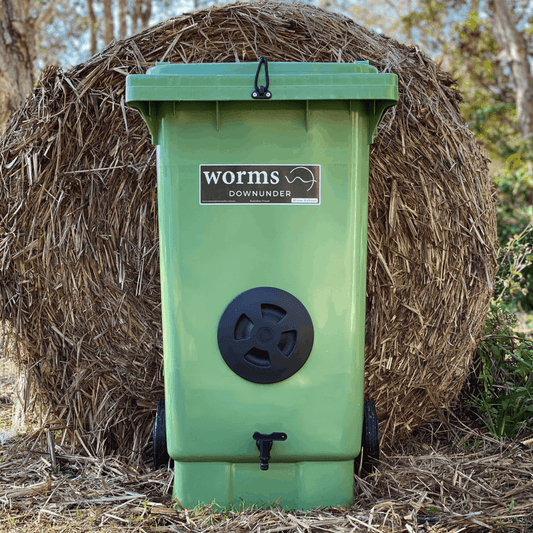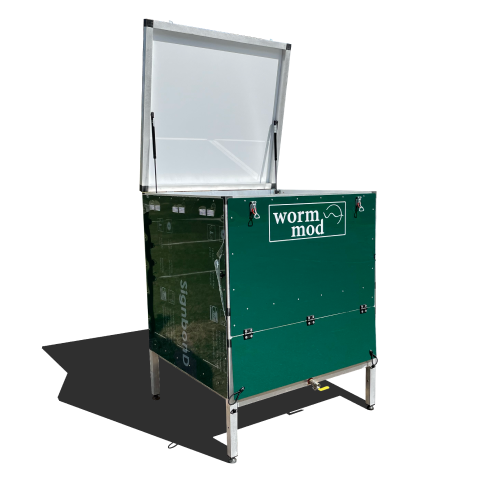Having trouble finding your worms? We’ve had a few customers contact us recently concerned that they can’t see their worms actively eating in the top layer. Don’t worry, you will find them hanging out further down towards the centre of their worm farm. They are trying to keep warm during these cooler months by burrowing into the centre of their bedding. This is the value of having a worm farm with a large thermal mass of bedding (rather than the thin layers of tray designs) as the core temperature remains more constant and is less impacted by external air temperatures. As the surface and edges get too cold, your worms are able to seek refuge in a warmer spot and emerge to the surface to eat at warmer times. A thin layer of bedding in a tray style worm farm is far more susceptible to extremes of temperature (and hydration, and pH etc.) which is why all of our habitat designs embody the large thermal mass principle.
Compost worms will live comfortably in bedding temperatures (as opposed to air temperatures) of around 16 – 27°C, give or take. Your worms will tolerate ranges of 4 – 32°C, however, they will become less productive at the temperature extremes. This is why it is common to experience lower feeding and breeding activity from your worms during the cooler months. Below are some tips to keep your worms happier and more active through winter:
Increase nitrogen (green) inputs, as they generate heat when decomposing
You can increase the layer thickness (to say, 5-7cm) of decomposing ‘greens’ (e.g. food scraps or grass clippings) to help generate heat inside the worm farm. We recommend only doing this in one section (e.g. 1/2 – 2/3 of the top surface area) so there is always space for your worms to avoid the decomposing food if it gets too hot.
Relocate your worm farm to a warmer area
At Worms Downunder we move ours into direct winter sun during the coldest months. With average day temperatures of 22-23°C in Brisbane, it helps keep our worms more active. Or, you could even move it inside (probably the laundry or garage rather than the lounge room). Your worms will be very considerate house guests – they work quietly and diligently and don’t smell. Though we would recommend having some floor protection down under the worm farm to avoid stains from leachate spills.
Insulate your worm farm to assist keeping in heat
Covering the whole worm farm with some canvas, a thick blanket or protection of some kind can help keep warmth in (worms generate heat when they are consuming waste) and the cold out.
Add a layer of moist carbon inputs and/or a worm blanket to the bedding surface
Think of it like tucking your worms in. Any old breathable material will do the job of a worm blanket. For those who want something a bit fun we have repurposed coffee bean sacks for sale, they are perfect as worm blankets. Combine this with a layer of moist carbon (i.e. brown leaves, aged horse manure, sugar cane mulch etc) and your worms will be lovely and snug.



